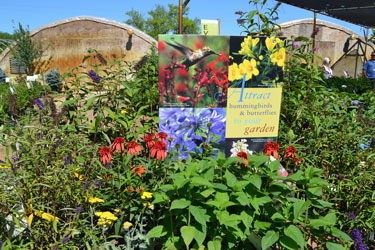5/31/2017
Consumers Want to Help Pollinators
Hyak Khachatryan
Editor’s Note: University of Florida Researcher Hayk Khachatryan recently reached out to Ellen Wells about a study done in conjunction with several other university researchers looking at consumer perceptions related to pollinator-friendly plants. These researchers—Alicia Rihn, Ben Campbell, Charlie Hall and Bridget Behe—conducted a survey and eye-tracking experiment to gauge these perceptions. Here are their results.
In today’s world, it seems like everyone is a-buzz about declining pollinator populations. Politicians, governmental agencies, economists, environmental activists, retail giants, growers and other green industry stakeholders are all talking about this problem. But there’s one group missing: consumers. Yes, consumers are discussing pollinator decline, however, their perceptions have yet to be quantified. Researchers from across the U.S. sought to quantify current consumer actions to aid pollinator insects and how pollinator promotions influence their purchasing decisions using a survey and gaze analysis conducted in Orlando, Florida, in 2014. Knowing consumers’ perceptions of the pollinator issue is important in improving the efficiency of aligning consumer needs with industry production and marketing strategies.
Key results:
• Most consumers (89%) are currently taking actions to aid pollinator insects. Seventy-one percent of consumers select plants to aid pollinators, while the remainder add pollinator-friendly features, reduce pesticide usage, add larvae food plants or take other actions. Only 11% of consumers take no actions to aid pollinator insects in their own landscapes.
• The presence of “pollinator friendly” in-store promotions increases consumers’ willingness to purchase ornamental landscape plants. The presence of the promotion increases consumers’ willingness to pay by $1.84.
• Visual attention to the “pollinator-friendly” promotion increases consumers’ willingness to purchase. Consumers who visually attend the promotion are willing to pay $1.81 more for the plants than those who didn’t visually attend the promotion.
• Consumers are more willing to purchase plants that are produced using certified organic or non-certified organic production methods than conventional production methods. Consumers are willing to pay $2.98 to $3.06 more for certified organic landscape plants and $4.02 to $4.12 more for non-certified organic production methods when compared to conventionally produced landscape plants.
• In-state and domestic promotions improve consumers’ willingness to purchase ornamental landscape plants. Consumers are willing to pay $5.96 to $6.01 more for landscape plants produced in-state and $4.63 to $4.67 more for domestically produced landscape plants when compared to imported plants.
 Pictured: An example of pollinator signage in the garden center.
Pictured: An example of pollinator signage in the garden center.
So what does this mean to green industry stakeholders? Results indicate that consumers are interested in and willing to pay premiums for “pollinator-friendly” plants. Furthermore, the majority of consumers are proactively trying to aid pollinators in their home landscapes with the majority purchasing plants to aid pollinator insects. However, in-store promotions indicating which plants aid pollinators are highly variable and may not be present.
For credence, attributes (i.e. those that aren’t readily apparent, such as aiding pollinators) using in-store promotions is essential in generating consumer awareness and interest. As shown by this study, the use of “pollinator-friendly” signage in the retail center is one means of communicating pollinator-related benefits to end consumers and promoting landscape plant sales. In turn, increasing the availability of pollinator-friendly plants in the homeowner’s landscape could have long-term, positive environmental implications. Although the study was limited to Florida consumers, the results imply that green industry stakeholders could benefit through developing promotional strategies to promote plants that aid pollinator insects.
GP